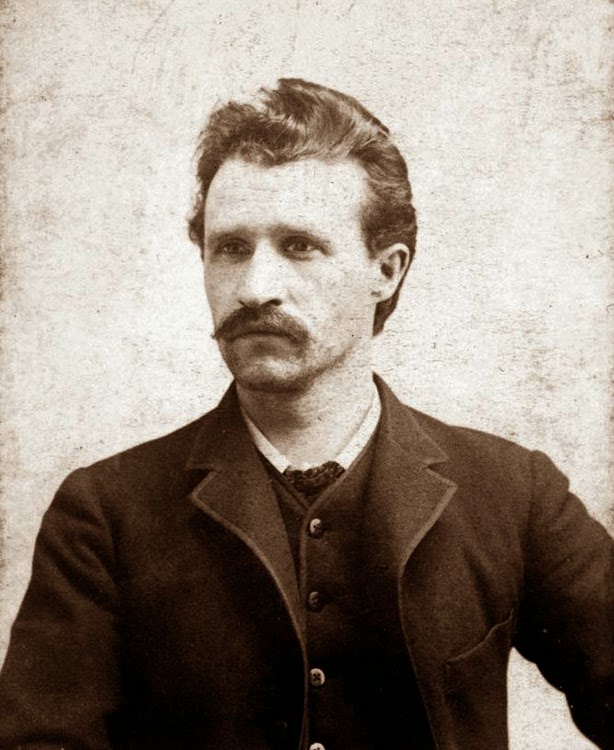Esquirlas / Splinters: for an
anarchist approach to the Haymarket affair
Francisco Morán,
Southern Methodist University
Almost without exception, the
covers of the monographs about the Haymarket affair offer to the eye the
explosion of the bomb. In both Paul Avrich’s study as well as James Green’s, the
vortex of the cover design toward which the reader's attention is drawn
inevitably is the very instant of the explosion. In the book Urban Disorder, by Carl Smith, the Great
Chicago Fire gains visual prominence to the point that it burns more than the half
of the cover. Given the fact, however, that the Great Fire of Chicago, as the signifier
of urban disorder, is linked to and takes us to the Haymarket affair and the
Pullman strike, the masses of smoke from the fire on the cover do not fail to
evoke the Haymarket bombing. In all cases, the graphic design appeals to iconic
images of violence and chaos that, as demonstrated by Smith, played a key role
in the perception of urban space, in sharp contrast to the promises of
organization and discipline of that same space offered by technological
modernity. The rails, bridges, telegraph wires supplied the illusory image of
the domestication of the urban space. Yet, when looking at the aforementioned
images what one finds is only the very impossibility of actually seeing an
ordered city. In Avrich’s book the policemen – the signifier par excellence of
law and order – are thrown violently outwards toward the bottom and the right
corner of the cover. We know that they are policemen because we see uniforms
and caps, but those very same figures are fuzzy, and even the two that are the closest
to the explosion could hardly be identified as law enforcement officers.
Something similar happens with the cover of Green’s book where the explosion
has the appearance of a sinister halo of light, which while occupying the
center of the image, indeed dislodges the subjects with such inordinate violence,
as if here also the violence had attained an agency of its own becoming just
violence, which insistently looks us in the eye.
 Literally and metaphorically,
these images blind us and challenge from the outset any attempt to produce a
tidy, coherent story. Before the explosion of the bomb that repeatedly blows up
on these covers, I think that this chaos suggests that there is another poetic
approach to the Haymarket affair, as valid as any other: rather than the
chronological narrative, well organized, another approach would play its cards only
on splinters of truth; splinters caught on the fly at the very instant of the
explosion. Such a story could just as well have only one recognizable
organizing principle: the obsession that could
cast us into the whirlwind of that story. This research would then be ruled
by the anarchist principle of any explosion: splintered truths, and slivers of
truth caught in an image, in a fleeting
gesture, in a face, in rumors, as well as in the so-called historical facts. Each
sliver itself must suffice as a signifying force, and of course, it will
eventually become apparent for the readers that nonetheless each one of them,
as well as each twist and detour we will take is strongly interconnected. Yet,
this has to be achieved without following any predictable map. Therefore, let
us light the fuse. Where will the explosion throw us? We don’t know yet.
Literally and metaphorically,
these images blind us and challenge from the outset any attempt to produce a
tidy, coherent story. Before the explosion of the bomb that repeatedly blows up
on these covers, I think that this chaos suggests that there is another poetic
approach to the Haymarket affair, as valid as any other: rather than the
chronological narrative, well organized, another approach would play its cards only
on splinters of truth; splinters caught on the fly at the very instant of the
explosion. Such a story could just as well have only one recognizable
organizing principle: the obsession that could
cast us into the whirlwind of that story. This research would then be ruled
by the anarchist principle of any explosion: splintered truths, and slivers of
truth caught in an image, in a fleeting
gesture, in a face, in rumors, as well as in the so-called historical facts. Each
sliver itself must suffice as a signifying force, and of course, it will
eventually become apparent for the readers that nonetheless each one of them,
as well as each twist and detour we will take is strongly interconnected. Yet,
this has to be achieved without following any predictable map. Therefore, let
us light the fuse. Where will the explosion throw us? We don’t know yet. 

Is it possible that the bomb was something that social commentators had been expecting, they had seen themselves sitting on a volcano of working class tensions for years and the bomb only confirmed their self-fulfilling prophecy?
ReplyDeleteI believe there is something of what you said. As a matter of fact metaphors of volcanoes and earthquakes have been flooding the press. There was an obvious fear, but also fascination about this issue. Carl Smith discusses the import of the symbolic in the Haymarket affair. There are also other markers. For instance, it is interesting how the fear and again the fascination with one of the diseases of the time - rabies - entered in the portrait on anarchists to the extend that it became an common epithet. "Rabid anarchist" was constantly used, hence their likening to dogs and wolves. Thanks for your comment
ReplyDelete